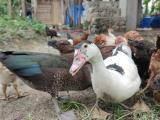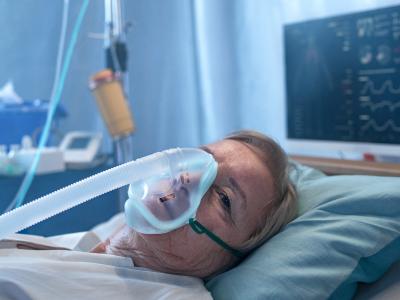Jul 22, 2010
Mexico and Puerto Rico face rising tide of dengue cases
Cases of the hemorrhagic form of dengue fever in Mexico are up by almost 500 over last summer, to about 1,900, and health officials in Puerto Rico are reporting a large spike in suspected dengue cases. Mexican authorities are concerned that flooding near the US-Mexico border from Hurricane Alex is creating ideal conditions for the breeding of the Aedes aegypti mosquito that spreads the disease, the Associated Press (AP) reported yesterday. Miguel Angel Lezana, director of the country's National Epidemiological Center, told the AP that dengue virus type 2, which can put people who have already been sickened with type 1 at greater risk for hemorrhagic disease, has now been detected in Veracruz state and is moving north toward the US border region. Lezana also said the mosquitoes have adapted to living at higher altitudes in Mexico, 1,155 ft higher than previously recorded. Meanwhile, the US Centers for Disease Control and Prevention (CDC) reported today that suspected dengue cases in Puerto Rico so far this year have reached 6,321, more than double the number from the same period in 2009. Puerto Rico has a large dengue epidemic every 3 to 5 years, the CDC said today in Morbidity and Mortality Weekly Report (MMWR). The agency said high temperatures and possibly a high prevalence of susceptibility to the predominant type 1 and 4 dengue viruses may be playing a role in the high number of cases, which is comparable to the number at this point in 1998, when a substantial epidemic occurred.
Jul 23 MMWR report
CDC reports on Cryptococcus gattii in Pacific Northwest
After Cryptococcus gattii infections started popping up in the Pacific Northwest in 2004, state, federal, and British Columbia health officials set up a working group to collect human and veterinary case information and isolates. Today in MMWR they reported that as of July they had received reports of 60 human cases of the fungal disease since January 2004 from four states: California, Idaho, Oregon, and Washington. C gattii spores can colonize the nasal cavity and spread to other sites, causing meningitis, pneumonia, and the development of lung, brain, or muscle cryptococcomas. Treatment includes prolonged intravenous antifungal drug therapy and resection of infected lung or brain tissue. The highest proportion of cases was in people aged 50 to 69 years, and among 47 patients for whom medical history is known, 38 had underlying conditions, including 3 with HIV infections. C gattii infections were the cause of death in 9 cases, and the disease may have played a role in 6 other deaths. CDC experts said the emergence of the fungus in a temperate climate could mean the pathogen has adapted to a new niche or that climate warming may have created more favorable conditions for it to survive and spread. Other possibilities, they said, are that environmental conditions that support the fungus may be broader than previously known and that some cases might have occurred in the Northwest in the past but gone unnoticed. The CDC urged physicians to consider C gattii infections in patients who have cryptococcal disease symptoms and to ask patients about travel to areas where the pathogen is endemic.
Jul 23 MMWR report
WHO confirms Indonesian H5N1 case and death
The World Health Organization (WHO) today confirmed the H5N1 illness and death of a teenage girl from Indonesia whose case was first reported in the country's media on Jul 18. The WHO said the 13-year-old girl from Central Java province got sick on Jun 16, was hospitalized on Jun 21, and died 3 day later. Investigators exploring the source of her infection found that poultry deaths had occurred in the girl's neighborhood about a week before she became ill. Today's WHO announcement, based on information from Indonesia's health ministry, raises the country's number of confirmed H5N1 cases to 167, including 138 fatalities. The new report also lifts the global H5N1 total to 501 cases, of which 297 were fatal.
Jul 22 WHO statement



















